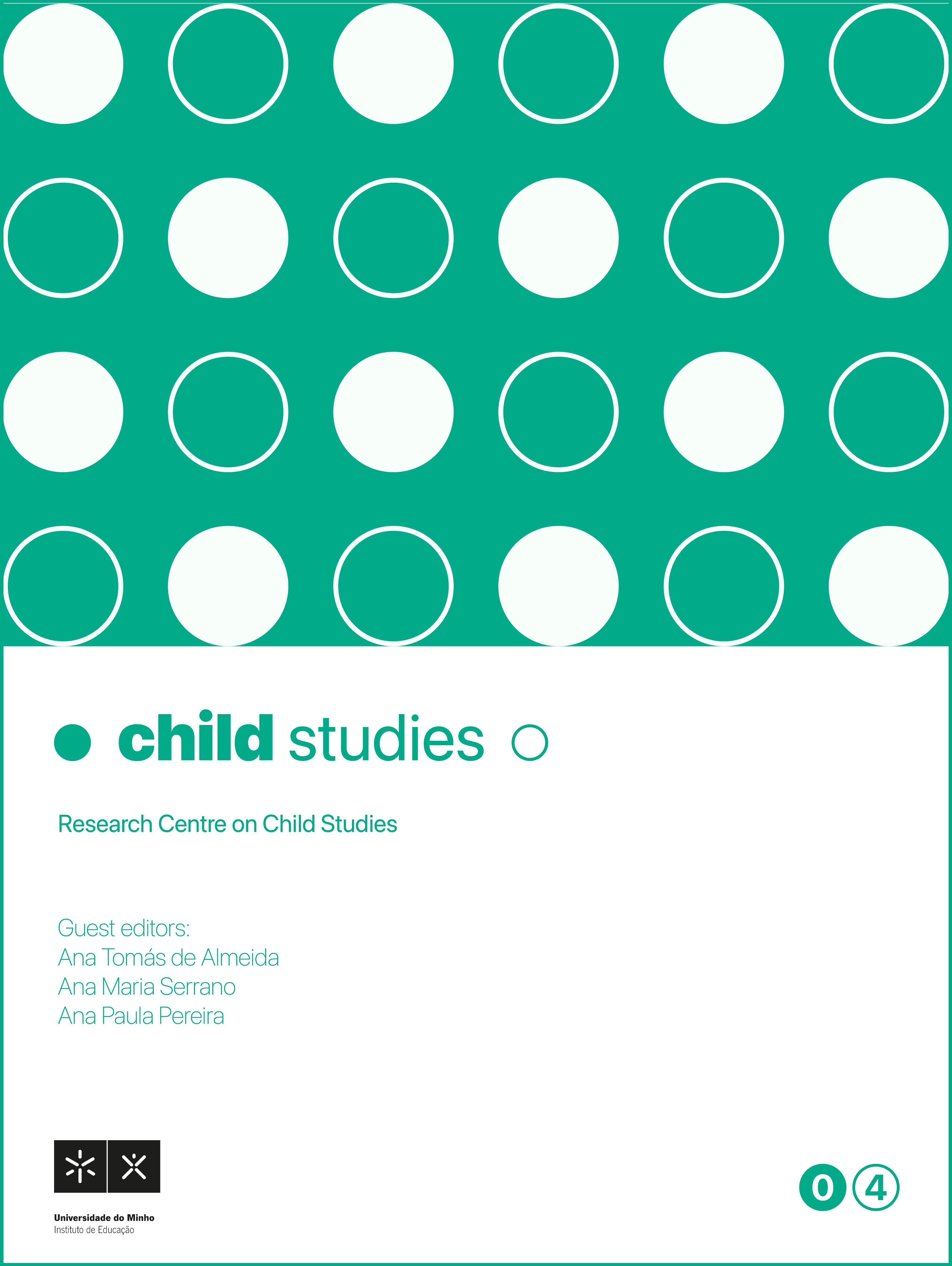Enhancing communicative skills in early childhood education: the role of the oral tradition and phonics
DOI:
https://doi.org/10.21814/childstudies.5532Keywords:
Oral tradition, early childhood education, phonics, communicationAbstract
This article is based on the reflection of the oral tradition and phonics in the communicative experience in early childhood education. The communicative experience in early childhood education is enriched through the oral tradition. Children learn to listen actively, imagine vividly, and express themselves creatively using those communicative experiences: Oral tradition and phonics. This article also explores the importance of oral tradition and phonics, because oral tradition is the use of phonics in the process of learning communicative skills in children. Phonics is a method of teaching by understanding how letters sound, children can string them together to form words and communicate effectively. The article aims to conclude that cultural transmission is also enriched through oral tradition within educational practices, factors that strengthen oral and communicative skills in early childhood education, such as phonetic practices, should be taken into account.
References
Alvares, Jady. (2022). Elemental Phonics. JDA Learning Resources.
Bruner, J. (1986). The child's speech. Cognition and human development. Barcelona, Paidós. Cleveland Public library. Learning made fun. (2023). https://cpl.org/concept-books-learning-made-fun/
Eide, D. (2012). Uncovering the Logic of English. A common-sense Approach to reading, Spelling and literacy. Logic of English, Inc; 2nd Edition (July 20)
Fandiño, G. (2020). Why talk about curriculum in early childhood education? https://doi.org/10.17227/nyn.vol6.num48-11364 Volumen 6 No 48, pp. 79-89. DOI: https://doi.org/10.17227/nyn.vol6.num48-11364
Hornsby, D. & Wilson, L. (2010). Teaching Phonics in Context. National Council of Teacher of English (NCTE).
Keating, P. R. (2000). Phonics or Whole Language, Which Is the Better Way To Teach Our Children? M.A. Research Project, Kean University, p. 35.
Lewis, M. & Sue, E. (2016). Phonics. Practices, Research and Policy.
Ley 1804 (2016). Política de Estado para el Desarrollo Integral de la Primera Infancia de Cero a Siempre. Instituto Colombiano del Bienestar familiar (ICBF). Recuperadode: https://www.icbf.gov.co/cargues/avance/docs/ley_1804_2016.htm
Lloyd, M. (2014) Phonics and the Resistance to Reading. CreateSpace Independent Publishing Platform. Paul Chapman Publishing.
Madox, K. & Feng, J. (2013) Whole Language Instruction vs. Phonics Instruction: Effect on Reading Fluency and Spelling Accuracy of First Grade Students. Presentation at Georgia Educational Research Association Annual Conference. https://files.eric.ed.gov/fulltext/ED545621.pdf
Mahapatra, S. (1994). Oral tradition: Words, signs and gestures. Sahitya Akademi, Vol. 37, No. 5 (163), pp. 69-78.
Martyn, M. (2022). Phonics for Kids: Help your Child Read and Write Better. Writers Branding LLC
Maslen, J. & Maslen, L. (2023) Beginning Readers Bind-up | Phonics, Ages 4 and up, Kindergarten. Bob Books Set 1.
Medium Blog. (2021). Why we need phonics in Early Childhood Education. https://squarepandaindia.medium.com/why-we-need-phonics-in-early-childhood- education-d0346f90a6c5
Montero, A. M. (2023). Tensions and resonances between conceptions of bilingualism and multilingual practices with indigenous and ethnic children. Infancias, Imágenes, 21 (2), 55-64. https://revistas.udistrital.edu.co/index.php/infancias/article/view/20797/19090
Nogueira, C. (2003). Oral Tradition, Universidade de Lisboa. 18/2, pp. 164-165. DOI: https://doi.org/10.1353/ort.2004.0075
Propp, V. (1974). Morfología del cuento. Fundamentos.
Reyes, J. (2016). The poetics of childhood. Bogotá, Colombia. Editorial Luna libros. Reyzábal, M. V. (2001). Oral communication and its didactics. Madrid, España. La Muralla. Richardson, J. Dufresne, M. (2019). The Next Step Forward in Word Study and Phonics. Scholastic Professional, September 16.
Rodríguez, M. (2006). Considerations on oral discourse in the classroom. Revista enunciación.
Tindall, M.L. (1993). The effects of phonics in reading and writing programs for young children. University of Northem Lowa, UNI ScholarWorks. https://scholarworks.uni.edu/cgi/viewcontent.cgi?article=4426&context=grp
Trachtenburg, Phyllis. (1990). Using Childen's Literature to Enhance Phonics Instruction. The Reading Teacher, Vol. 43. No. 9, pp. 648-654. International Literacy Association
United Nations Educational, Scientific and Cultural Organization, Intangible Cultural Heritage (Unesco) (2021). Oral traditions and expressions including language as a vehicle of the intangible culture heritage. https://ich.unesco.org/en/oral-traditions-and-expressions- 00053
Veatch, J. (1988). En garde, whole language. In J.B. Smith (Ed.) 1988 School Library Media Annual, h 8-14. Englewood, CO: Libraries Unlimited.
Weaver, c. (1990). Understanding whole language: From principles to practice. Portsmouth, Heineman.
Downloads
Published
How to Cite
Issue
Section
License
Copyright (c) 2024 Ana Maria Montero Ramirez

This work is licensed under a Creative Commons Attribution-NonCommercial 4.0 International License.



